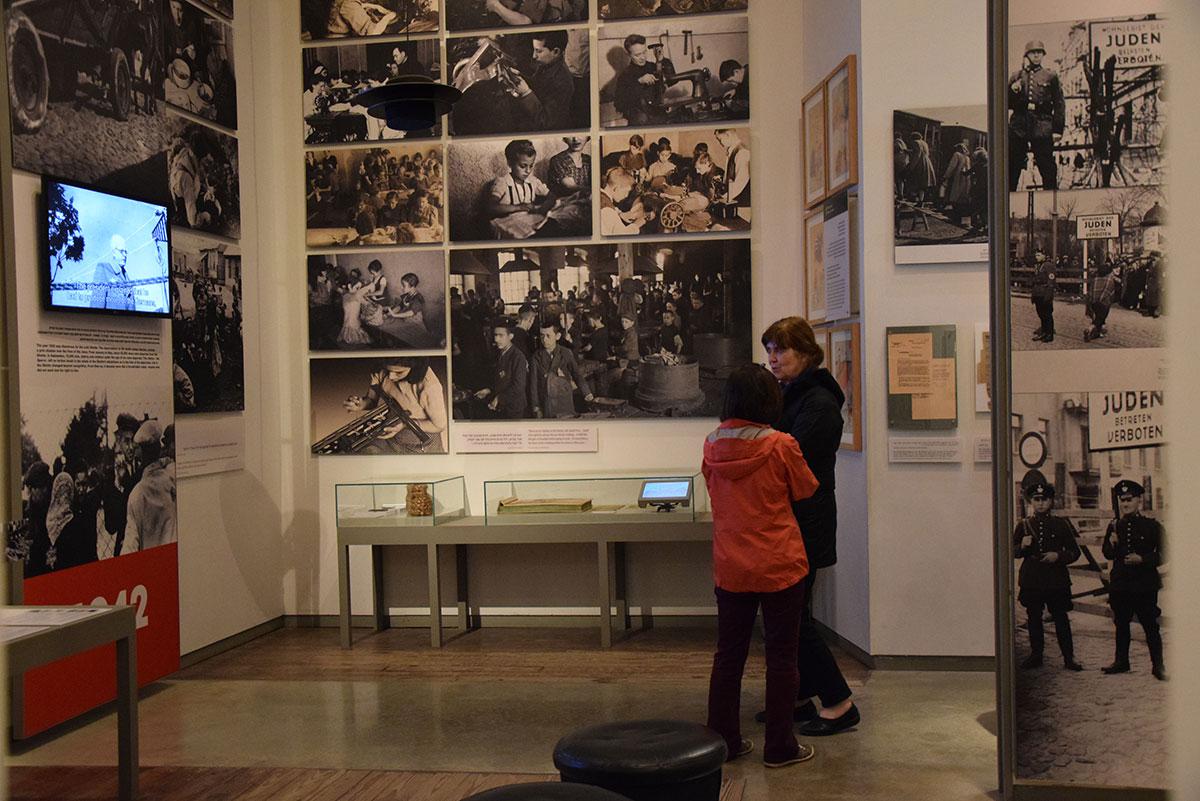

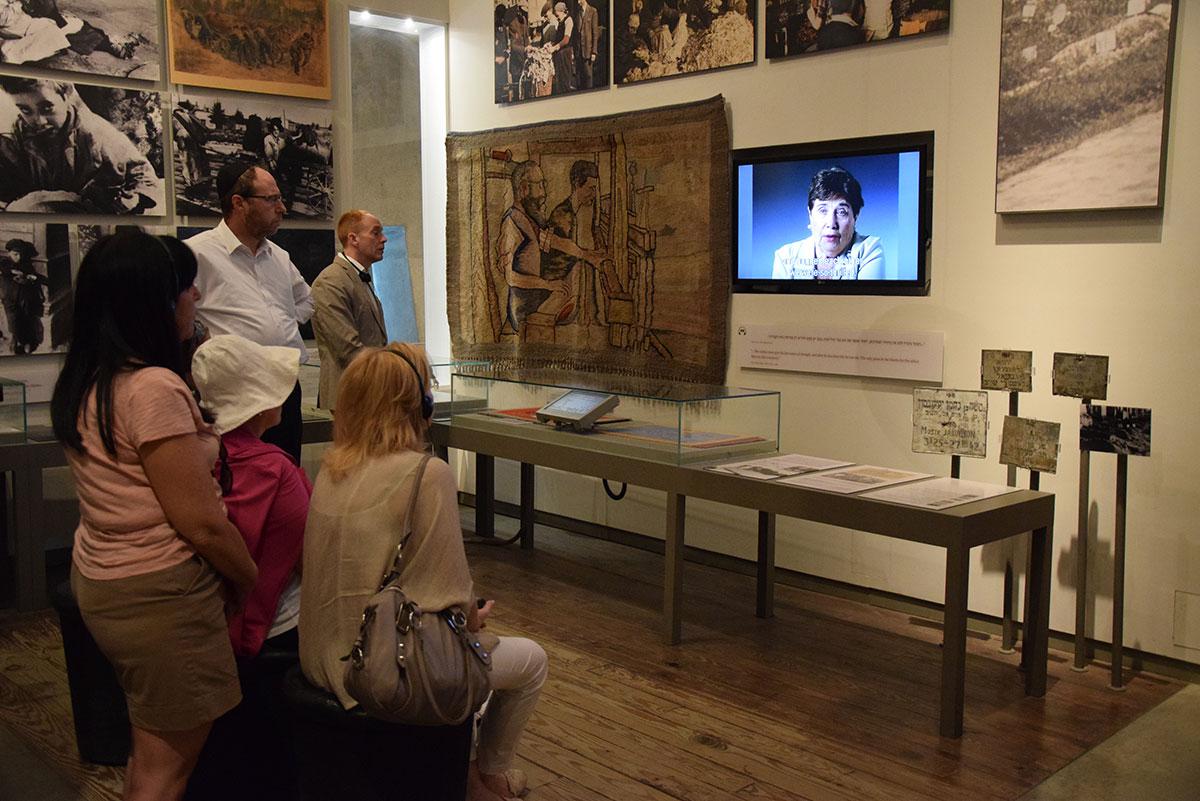

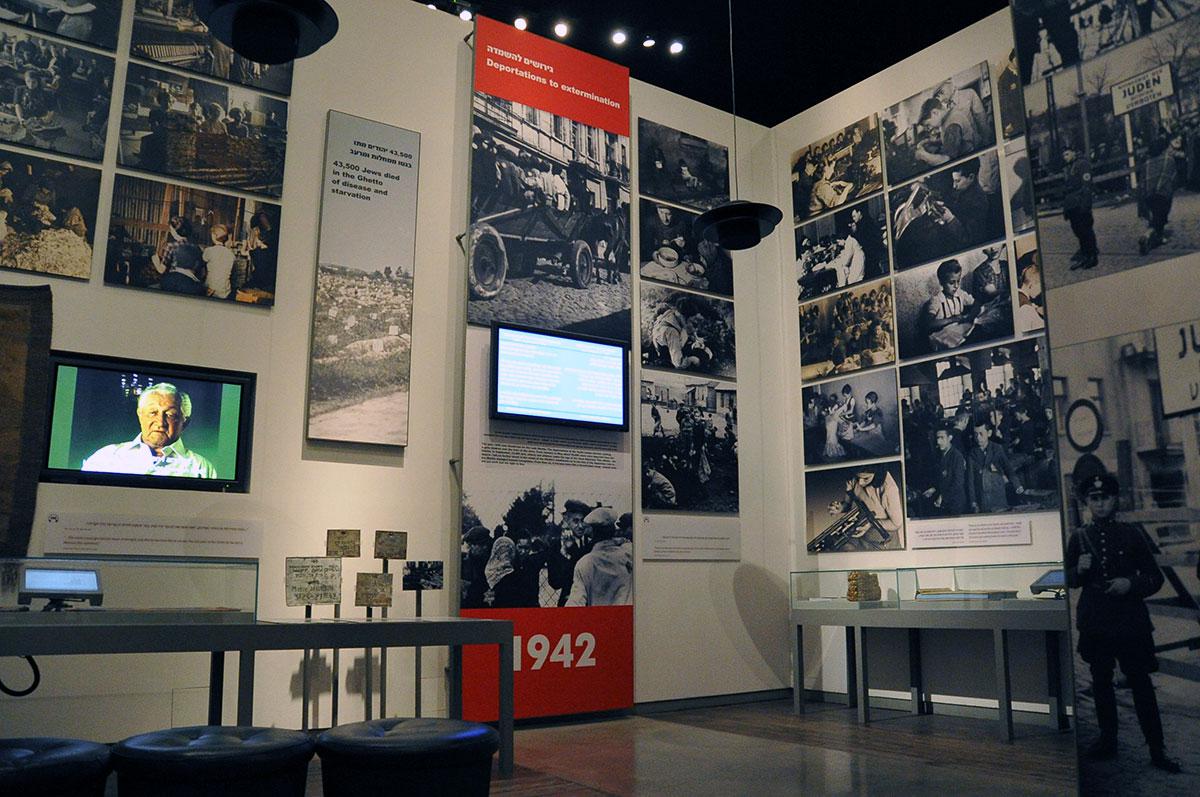

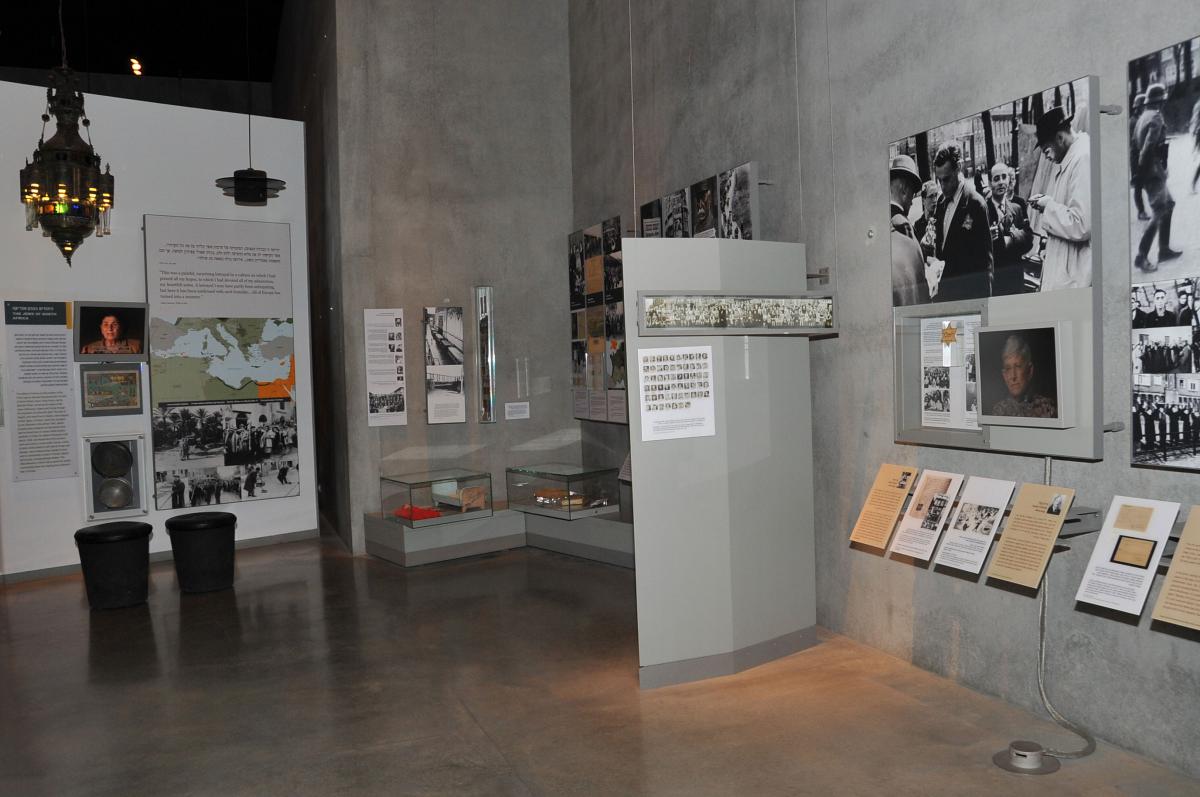

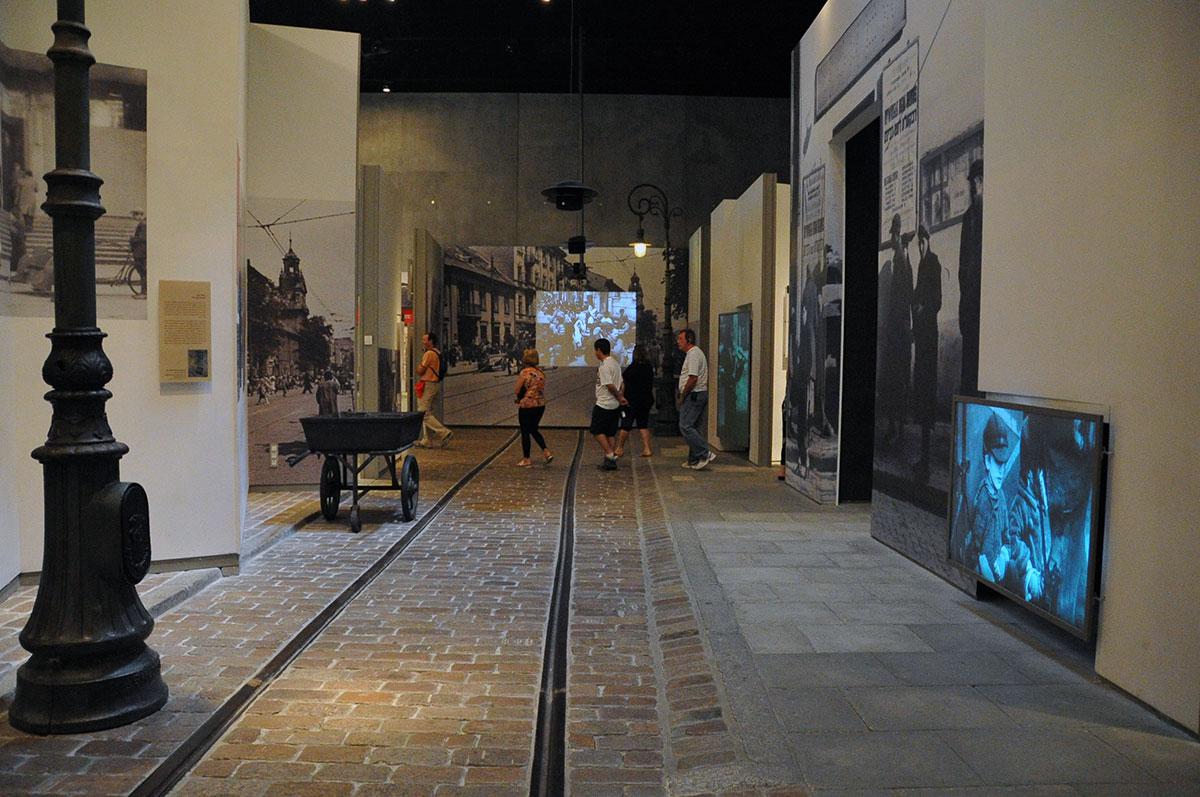

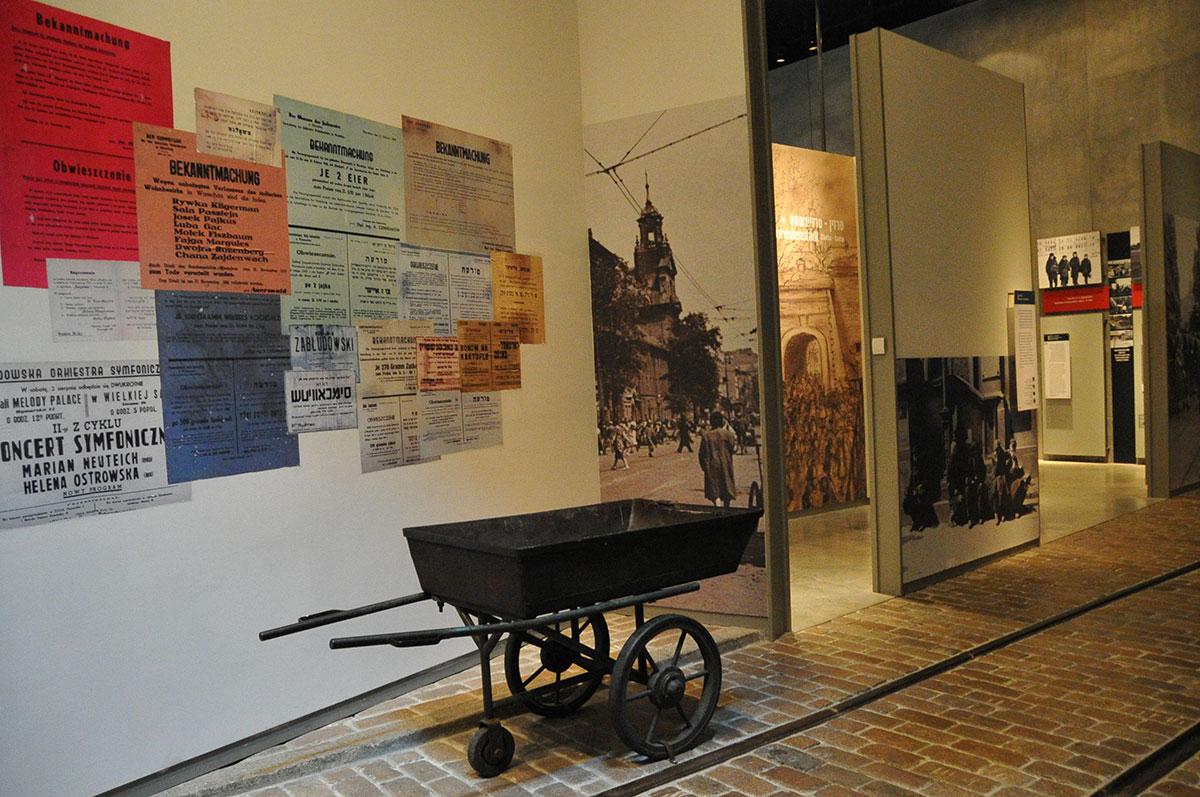

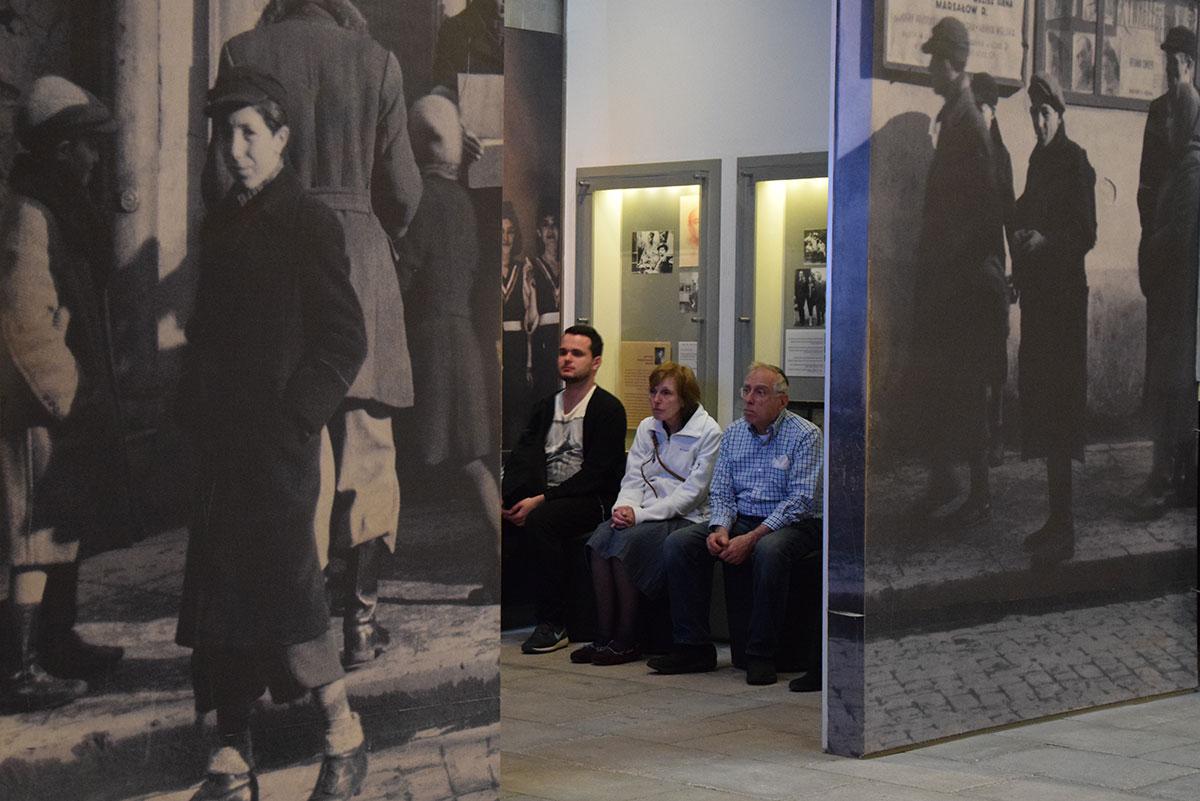

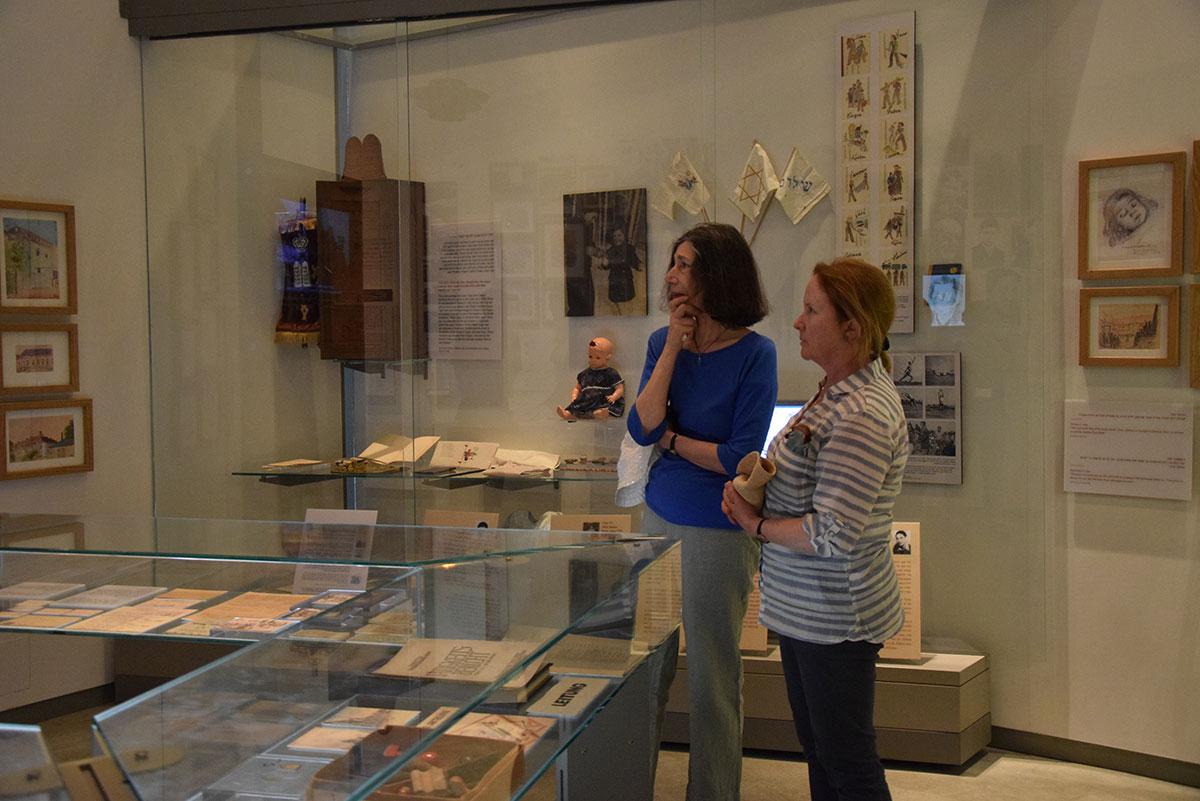

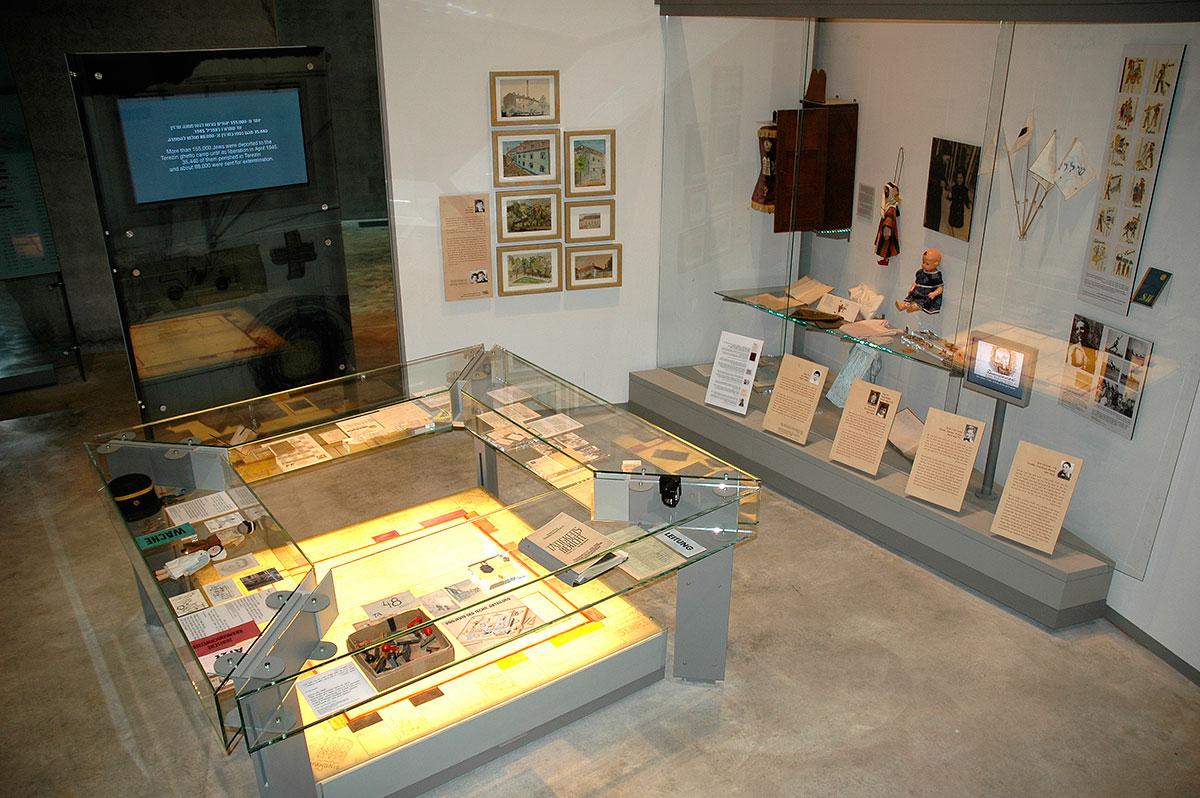

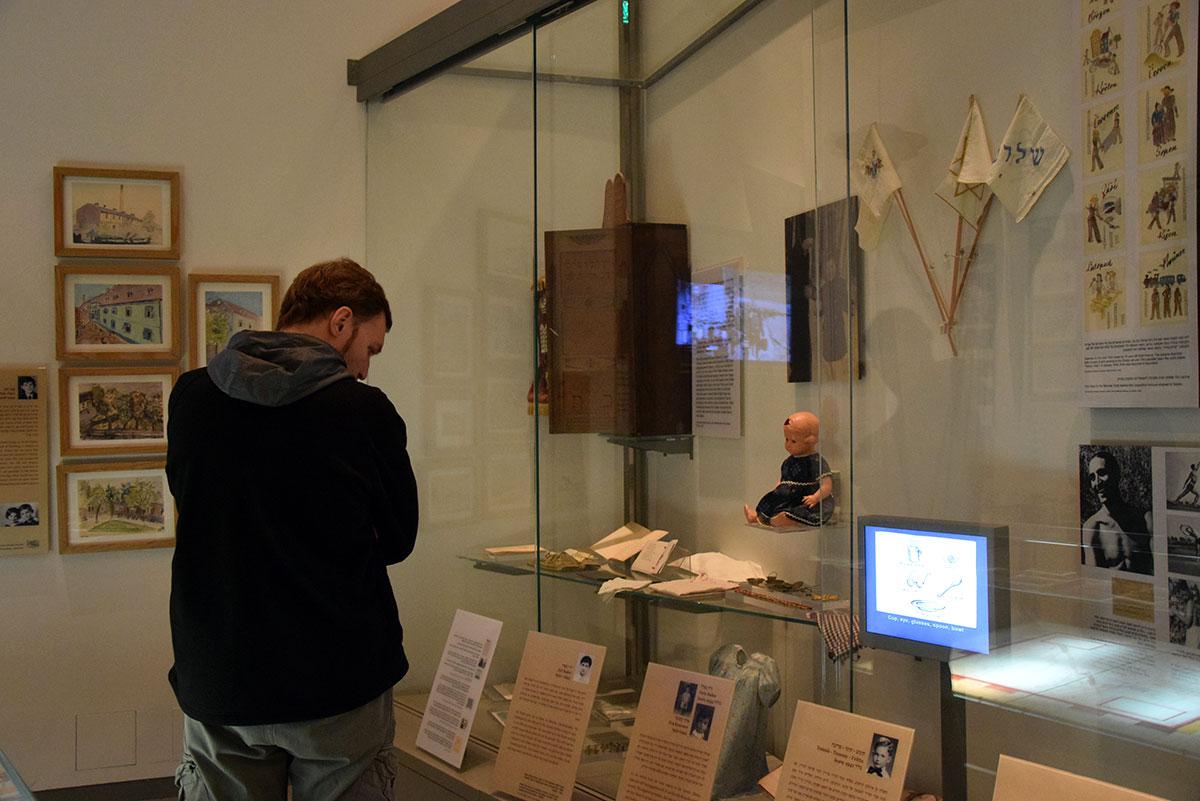

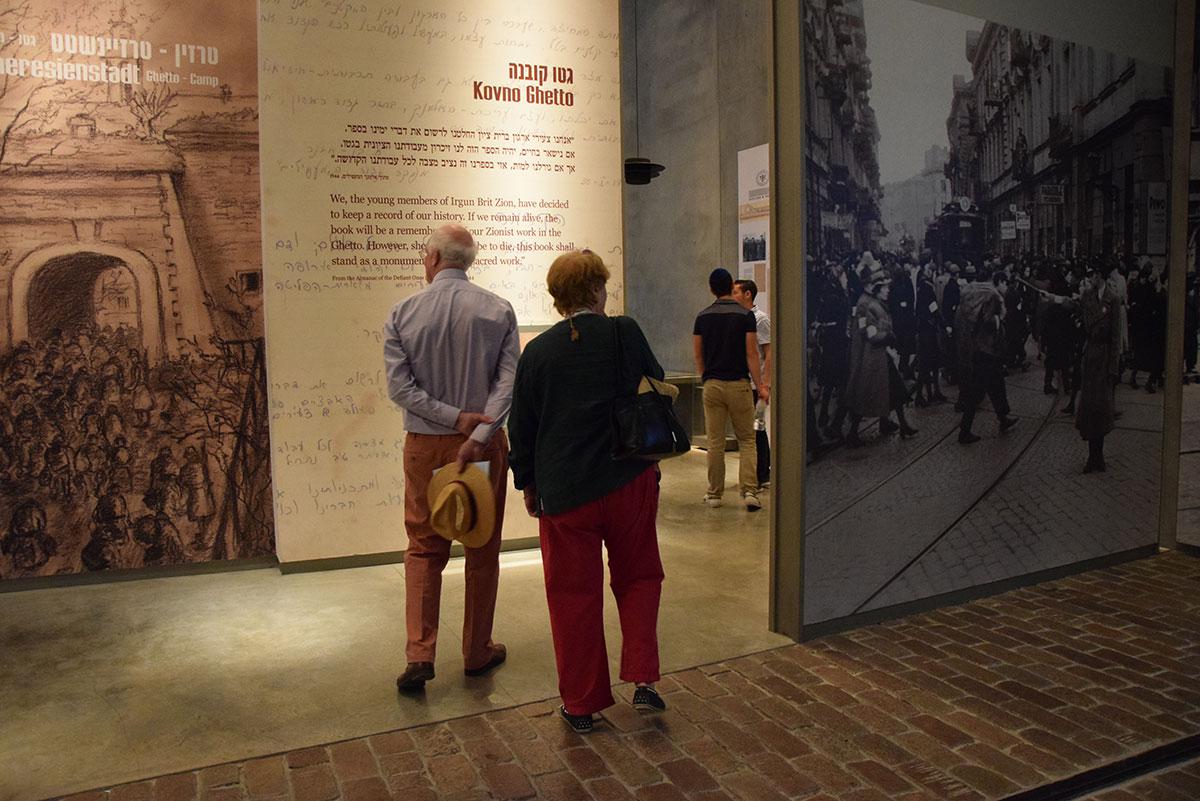

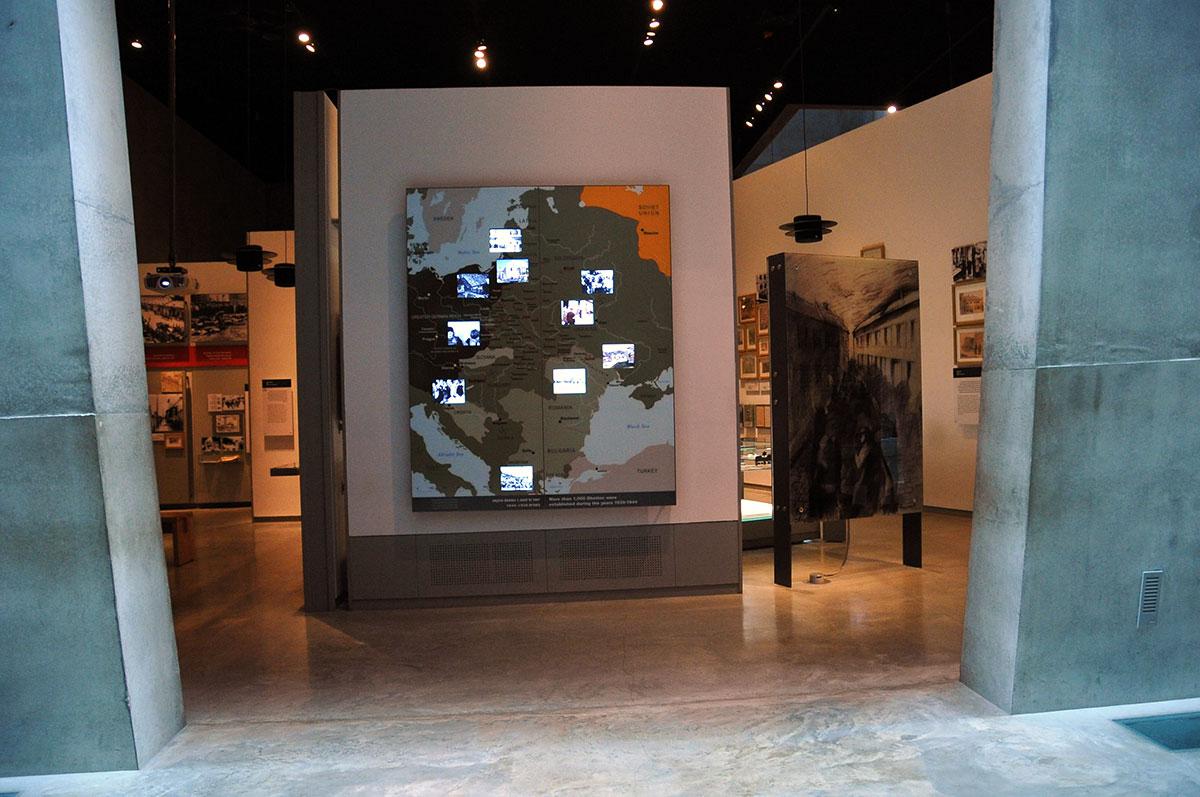

Sunday to Thursday: 09:00-17:00
Fridays and Holiday eves: 09:00-14:00
Yad Vashem is closed on Saturdays and all Jewish Holidays.
Entrance to the Holocaust History Museum is not permitted for children under the age of 10. Babies in strollers or carriers will not be permitted to enter.
























This gallery opens with an area dedicated to the fate of Jews in Western Europe. Personal stories of families from France and Holland are chosen to illustrate German policies in the conquered lands of Western Europe.
The largest part of this gallery is devoted to providing visitors with a true sense of the Jewish experience in the Ghettos [of Eastern Europe]. Four Ghettos are chosen for this purpose: Lodz and Warsaw - the largest Ghettos in Poland - as well as Lithuania’s Kovno Ghetto and the Theresienstadt Ghetto, established 40 miles NW of Prague.
Lodz Ghetto – residents of this Ghetto were forced to work as slave laborers for the Germans during their incarceration there. Working under the most inhumane conditions, the Jews hoped their efforts would save them from deportation to the extermination camps. However the Ghetto was liquidated in August 1944 – a few weeks before liberation.
Warsaw Ghetto – this was the largest of the Ghettos, housing nearly 500,000 people. One street, Leszno, has been symbolically reconstructed using genuine artifacts, offering visitors a first-hand rendition of the Ghetto’s prominent sights, personalities, and phenomena. Through letter collections and studies that were carried out in the Ghetto, mostly contained in the Oneg Shabbat Archive established by the historian, Dr. Emmanuel Ringleblum, light is shed on the struggle for life that was waged by the Ghetto’s residents. Photographs from the Yad Vashem collection enhance the display.
Kovno Ghetto – this Ghetto, was like others in German occupied areas of the Soviet Union, in that one-third of the community was murdered at killing sites before the survivors were incarcerated, leaving no room for illusions regarding the Nazis’ plans. The efforts made by residents to maintain a semblance of life and culture despite a definitive awareness of their fate are singled out.
Theresienstadt Ghetto – a unique Monopoly gameboard, made in the Ghetto in 1943 forms the center of this exhibition. The stations in the game were named after the streets and main buildings in the Ghetto. Using the gameboard as a base for exploring the Ghetto, visitors can see how the children and the elderly were treated and cared for by their fellow Jews, and how people expressed their feelings through works of art, music, and poetry.

Thank you for registering to receive information from Yad Vashem.
You will receive periodic updates regarding recent events, publications and new initiatives.
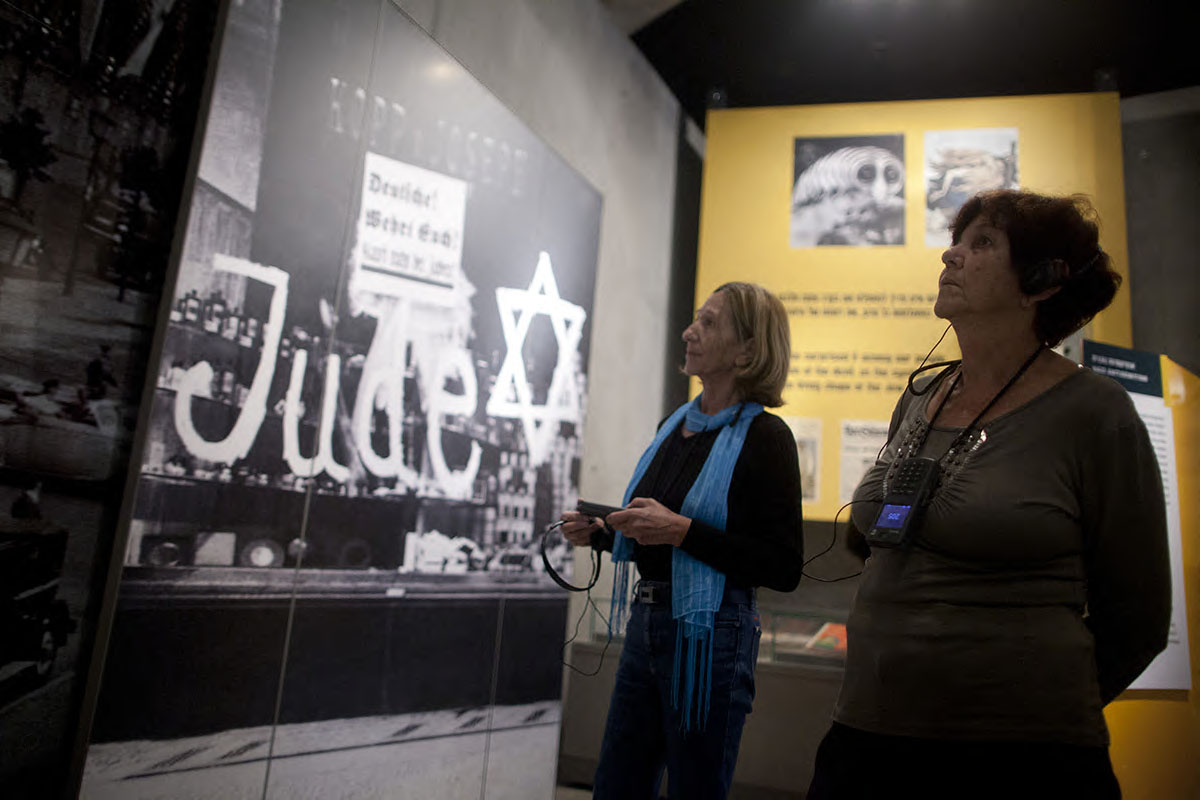
"The work of Yad Vashem is critical and necessary to remind the world of the consequences of hate"
Paul Daly
#GivingTuesday
Donate to Educate Against Hate


Worldwide antisemitism is on the rise.
At Yad Vashem, we strive to make the world a better place by combating antisemitism through teacher training, international lectures and workshops and online courses.
We need you to partner with us in this vital mission to #EducateAgainstHate
The good news:
The Yad Vashem website had recently undergone a major upgrade!
The less good news:
The page you are looking for has apparently been moved.
We are therefore redirecting you to what we hope will be a useful landing page.
For any questions/clarifications/problems, please contact: webmaster@yadvashem.org.il
Press the X button to continue



